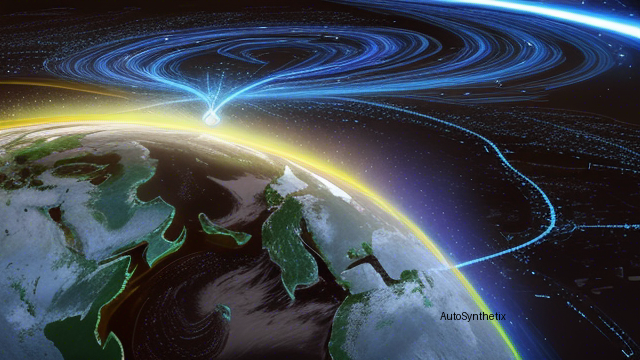Introduction: As artificial intelligence (AI)'s influence expands across industries, innovative applications continue to emerge – even in seemingly remote areas like space exploration. Recent research spearheaded by Gabriele Inzerillo, Diego Valsesia, and Enrico Magli from Politechnico di Turin unveils a revolutionary approach to harnessing AI's potential while orbiting Earth aboard satellites. Their work aims to expedite crisis management during catastrophic incidents by enabling instantaneous onboard analyses of vital environmental occurrences, paving the way for swift interventions.
Background: Conventional Versus Emerging Paradigms in Satellite Imaging Systems Traditionally, satellite imagery captures vast amounts of visual data, transmitting these bulky files down to earth for laborious terrestrial decoding before reaching decision makers or first responders. However, as crises demand immediate action, the delay posed by this convoluted pipeline becomes increasingly untenable. To counteract this shortcoming, the scientific community envisions streamlining processes via direct satellite-based analytics capabilities. By incorporating advanced machine learning techniques onto orbital hardware, crucial event identification could take place promptly after acquisition, resulting in significantly accelerated warning disseminations.
Proposed Solution: Self-Supervised Learning Powered Modular Deep Learning Payloads To actualize their vision, the researchers have devised a novel "self-supervised lightweight backbone" strategy. Designed specifically for resource-constrained environments such as satellites, this methodology allows for parallel execution of numerous inferences without compromising efficiency. Crucially, the framework affords independent growth paths per task, lowering reliance upon extensive labeled datasets – a considerable advantage given the logistical challenges associated with sourcing labels extraterrestrially.
Experimental Validation Across Multiple Task Scenarios Three distinct case studies serve as proof points validating the model's efficacy. These include tasks related to cloud segmentation, flood detection, and marine debris classification, executed on a low-power embedded platform consuming merely 7 watts. Encouraging outcomes demonstrate comparable performance standards relative to intricate offworld architectures, whilst achieving remarkable bandwidth exceeding 8 million pixels per second.
Conclusion: Revolutionizing Real-time Disaster Management Through Advanced Orbital Computing Capabilities By reimagining how AI integrates seamlessly into our geospatial monitoring infrastructure, the team propels us one step closer toward fully autonomous responsiveness in times of planetary distress. As technology continues evolving exponentially, anticipate further breakthroughs transforming traditional approaches to disaster mitigation strategies, ultimately culminating in a safer, smarter world.
References: Please see original text body for detailed citation information.
Source arXiv: http://arxiv.org/abs/2408.09754v1
